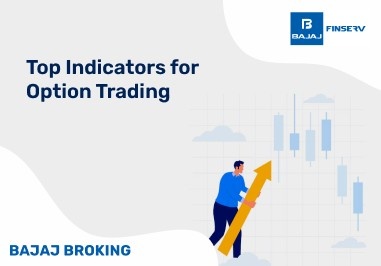BAJAJ BROKING
PDP Shipping & Projects IPO is Open!
Open a Free Demat Account
Trade Now, Pay Later with up to 4x
Track Market Movers Instantly
Share Market Today | Gift Nifty Hints At Over 250 Points Drop In Indian Markets
Synopsis:
Today’s share market features how Oil prices rose for the third day amid Middle East tensions, Zydus received USFDA approval for a prostate cancer drug, Mankind Pharma acquired Bharat Serums, Ashoka Buildcon secured ₹1,264 crore contracts, SEBI curbed F&O trading, and FIIs sold equities.
Latest Market News
1. Oil climbs for the third day as Middle East supply risks dominate.
2. ZydusLifesciences gets USFDA nod to produce prostrate cancer drug.
3. MankindPharma gets all regulatory approvals for the acquisition of Bharat Serums and Vaccines.
4. AshokaBuildcon receives 2 LoAs worth ₹1,264 cr from MMRDA for the design and construction of two creek bridges.
5. SEBI announces new measures to tame speculative retail trading in F&O markets.
6. FIIs net sell ₹5,579.35 cr while DIIs net buy ₹4,609.55 cr in equities on Tuesday.
MANKIND PHARMA LIMITED
Trade2166.45-43.75 (-1.97 %)
In-Depth Market Insights: Global Outlook, Derivatives & More
US Share Market News
Performance Overview:
The Dow Jones Industrial Average and the Nasdaq Composite closed marginally higher on Wednesday as traders assessed the latest economic data and remarks by a Federal Reserve official.
Sector-Specific Movements:
The Dow and the technology-heavy Nasdaq rose 0.1% each to 42,196.5 and 17,925.1, respectively. The S&P 500 was little changed at 5,709.5. Energy led the gainers among sectors, while consumer discretionary and consumer staples saw the steepest declines.
Economic Indicators:
Data from the Bureau of Labor Statistics are expected to show the US economy added 150,000 nonfarm jobs last month, which would mark an acceleration from the 142,000 gain posted for August, according to a survey compiled by Bloomberg.
Other Asset Classes
Treasury Yields:
The US 10-year yield rose 3.8 basis points to 3.78%, while the two-year rate gained 1.6 basis points to 3.64%.
Currency:
The dollar index ticked up to 101.70.
Commodities:
West Texas Intermediate crude oil increased 1.6% to $70.92 a barrel. Commercial crude stockpiles in the US posted a surprise build last week, government data showed.
Crude futures logged bigger gains Tuesday amid escalating geopolitical tensions in the Middle East.
Gold dropped 0.4% to $2,680.10 per troy ounce, while silver rose 1.2% to $32.13 per ounce.
Asian Markets
General Trends:
Investors will look ahead to a busy slate of data in Asia.
Specific Index Performance:
Markets in mainland China will remain closed until Oct. 8 for a week-long holiday and South Korea will be shut today for National Foundation Day.
Japan stocks led Asian markets higher in today's morning trade after Wall Street inched higher amid rising tensions in the Middle East.
Japan's Nikkei 225 opened 2.57% higher while the broad-based Topix added 2%.
The yen traded weaker at 146.54 against the U.S. dollar overnight
Japan's new prime minister, Shigeru Ishiba, expressed that currently, they are not in support of another rate hike.
India Market Outlook
GIFT Nifty Projection:
Gift Nifty suggests a negative opening of more than 250 points for the Indian markets. Nifty spot after a negative opening is likely to trade volatile in the broad range of 25,300 - 25,900.
Market in Previous Session:
Indian equity indices ended on a flat note in the volatile session on October 1st with the Nifty slipping below the 25,800 mark, weighed down by concerns over a widening current account deficit and weak manufacturing data.
At the close of trading, the Sensex had fallen by 33.49 points or 0.04 per cent to 84,266.29, while the Nifty had declined by 13.95 points or 0.05 per cent to settle at 25,796.90.
Among the sectors, buying interest was observed in media, auto, and IT, while selling pressure impacted the telecom, power, FMCG, oil & gas, and real estate sectors.
Nifty Short-Term Outlook:
The index began this month forming a doji candle indicating indecisiveness in today’s session. We might see a knee-jerk reaction in opening trade on account of Middle East tensions escalating between Israel and Iran.
Gift Nifty suggests a gap down opening below the support area of 25700. Failure to move above 25700 will keep immediate bias down and will signal corrective consolidation in the range of 25300-26000 amid geopolitical tension in the Middle East.
The index has key support placed as 25500-25300 is the confluence of the 50% retracement of the previous up move and previous major breakout area.
Escalation of geo-political tensions in the Middle East region with its impact on crude oil prices and the renewed focus on China could all play spoilsport for the Indian markets.
Intraday Levels:
Nifty: Intraday resistance is at 25,810 followed by 25,940 levels. Conversely, downside support is located at 25,520, followed by 25,450.
Bank Nifty: Intraday resistance is positioned at 53,280, followed by 53,500, while downside support is found at 52,250, followed by 52,000.
Fin Nifty: Intraday resistance is positioned at 24,480, followed by 24,600, while downside support is found at 24,020, followed by 24,080.
Derivative Market Analysis
Nifty:
The highest call OI has been observed at the 26,000 level, with a dominance of call writers suggesting limited upside and strong resistance.
On the flip side, put OI has been observed at the 25,500-25,600 level, which will act as immediate support for the index.
Accumulation of both call and put OI at the 25,800 level suggests a straddle formation and a key deciding level for the day.
According to option chain analysis, the immediate range for Nifty is between the 25,500 and 26,000 levels.
The Nifty put-call ratio declined by 0.01 and is now placed at 0.83.
Bank Nifty:
The accumulation of both call and put OI at the 53,000 level suggests a straddle formation and is likely to act as a deciding level for the day.
Price surpassing and sustaining above the 53,000 level will trigger short covering, while price holding below the 53,000 level will indicate a corrective bias toward the 52,500 level.
According to option chain analysis, the broader range for Bank Nifty is between the 52,500 and 53,500 levels. A break on either side of this range will trigger further directional movement.
The Bank Nifty put-call ratio has increased by 0.16 and is now placed at 0.78.
Stay on top of the latest market news with Bajaj Broking’s insights. Our point-to-point expert analysis digs deep into the surface, empowering you with a unique perspective on domestic and global stock market events. Get all the current share market news, including US share market updates in one place and make wise investment decisions.
Disclaimer: Investments in the securities market are subject to market risk, read all related documents carefully before investing.
This content is for educational purposes only. Securities quoted are exemplary and not recommendatory.
For All Disclaimers Click Here: https://bit.ly/3Tcsfuc
Read More Blogs
Our Secure Trading Platforms
Level up your stock market experience: Download the Bajaj Broking App for effortless investing and trading













